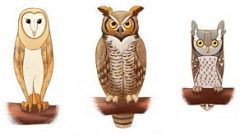The Four Keys to ID
- Size & Shape
These medium-sized owls have long, rounded wings and short tails, which combine with a buoyant, loping flight to give them a distinctive flight style. The legs are long and the head is smoothly rounded, without ear tufts.
Relative Size
Larger than a screech-owl, but smaller than a Great Horned Owl.

 crow-sized
crow-sizedMeasurements
- Both Sexes
- Length: 12.6-15.8 in (32-40 cm)
- Weight: 14.1-24.7 oz (400-700 g)
- Wingspan: 39.4-49.2 in (100-125 cm)
© Darren Clark / Macaulay Library
- Color Pattern
- Behavior
- Habitat
Regional Differences
Ornithologists recognize five American Barn Owl subspecies groups: "American," "White-winged," "Curacao," "Lesser Antilles," and "Galapagos." The widespread "American" group ranges from southern Canada to the southern tip of South America; the "White-winged" group occurs on Cuba, Jamaica, and the Cayman Islands; the "Curacao" group is limited to Curaçao (and possibly Bonaire); the "Lesser Antilles" group is found on St. Vincent, Grenada, and Dominica; and the "Galapagos" group is restricted to the Galapagos archipelago. American Barn Owls are highly variable, so the best way to identify subspecies groups is by range. The "Lesser Antilles" group, with a brownish face and dark upperparts, is the most distinctive group, and is sometimes treated as a separate species.







